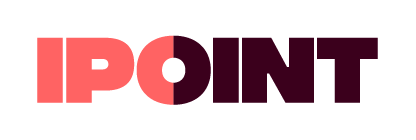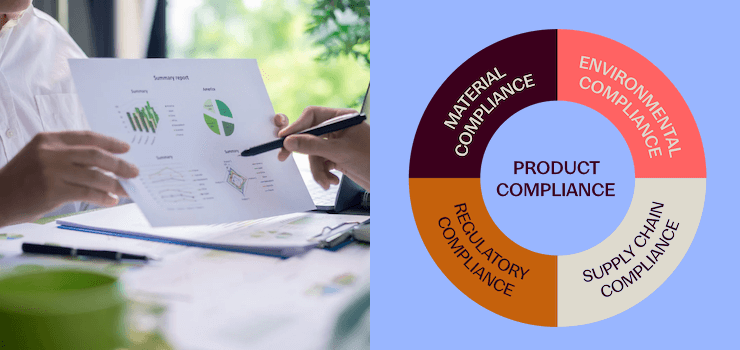This article breaks down the regulation’s scope, who it affects, and what compliance requires. It also outlines the broader regulatory landscape and shows how digital tools can support efficient, audit-ready implementation.
Table of Contents
What Is the EU Conflict Minerals Regulation?
The EU Conflict Minerals Regulation (Regulation (EU) 2017/821) was introduced to tackle a pressing issue: the trade in minerals that helps finance armed conflict and fuels human rights abuses.
At the heart of the regulation are four raw materials – tin, tantalum, tungsten, and gold. Known as conflict minerals (3TG), these metals are found in everyday products like smartphones, cars, and industrial machinery. But when sourced from conflict-affected and high-risk areas (CAHRAs), they can contribute to violence, exploitation, and corruption.
To break this link, the EU set binding due diligence obligations for companies importing 3TG into the European market. The regulation has been in effect since January 1, 2021.
Its structure aligns with the OECD Due Diligence Guidance – the global benchmark for responsible mineral sourcing. This ensures legal clarity for businesses and a level playing field across international markets.
The result: a firm legal foundation that shifts responsible sourcing from a voluntary goal to a regulatory expectation.
 Image: EU Conflict Minerals Regulation Timeline: From Proposal to Enforcement
Image: EU Conflict Minerals Regulation Timeline: From Proposal to Enforcement
Does the EU Conflict Minerals Regulation Apply to You?
The regulation targets EU-based importers of tin, tantalum, tungsten and gold (3TG) that exceed defined annual volume thresholds. If your company brings these minerals or metals into the Union – even indirectly – you fall within the scope of this conflict minerals EU regulation.
Before you can claim compliance, you need a clear roadmap. In practice, importers are expected to:
- Adopt a conflict-minerals supply-chain policy – a public statement that sets expectations for suppliers
- Build internal management systems – designate responsibilities, keep records and train staff
- Collect supplier data and assess risks – trace mineral origin, identify CAHRAs and evaluate smelters/refiners
- Mitigate risks and track progress – develop action plans, cooperate with suppliers and monitor improvements
- Report annually on due-diligence results – publish findings to boost supply-chain transparency
Member-state authorities monitor adherence and can require corrective action for non-compliance. All requirements follow the structure set out in the OECD Due Diligence Guidance – but with legal force under EU law.
Streamline EU Conflict Minerals Regulation Compliance

Cut manual effort – IPOINT’s Conflict Minerals software automates due-diligence workflows and keeps your 3TG data audit-ready. Gain end-to-end visibility and meet EU requirements with confidence.
Why Compliance Creates Long-Term Business Value?
Meeting the EU Conflict Minerals Regulation isn’t just a legal obligation – it’s a strategic opportunity. Companies that take compliance seriously can unlock advantages that go far beyond risk avoidance.
Risk Reduction Through Supply Chain Visibility
Due diligence processes help companies identify weak links and potential disruptions early. Mapping supply chains, evaluating smelters, and engaging suppliers all contribute to better oversight. This reduces exposure to reputational, legal and operational risks – especially in volatile sourcing regions.
ESG Alignment and Future-Proofing
Sourcing minerals responsibly is a key pillar of environmental, social and governance (ESG) performance. Conflict minerals compliance positions companies to meet broader regulatory expectations – including the Corporate Sustainability Reporting Directive (CSRD) and upcoming mandatory human rights due diligence laws. Early action lays the groundwork for integrated reporting and credible sustainability claims.
Trust, Transparency and Competitive Advantage
Public due diligence reports and transparent sourcing practices send a clear signal: this company takes responsibility seriously. That builds trust with customers, partners, investors – and regulators. In a market where responsible supply chains are no longer optional, compliance can set you apart.
Beyond the EU: Global Conflict-Minerals Rules
EU importers rarely operate in isolation – global supply chains mean multiple legal touchpoints. Two stand out.
United States: Dodd-Frank Act (Section 1502)
Section 1502 of the Dodd-Frank Act requires SEC-registered companies (SEC: U.S. Securities and Exchange Commission) to trace and disclose 3TG sourced from the Democratic Republic of Congo and its neighboring countries. Compared to the EU regulation, its scope is narrower and focused on a specific geographic region. However, the annual Form SD filing, audit expectations and public disclosure obligations make it one of the most demanding compliance regimes for conflict minerals worldwide.
Voluntary and Emerging Standards
Frameworks such as the Responsible Minerals Assurance Process (RMAP) and the Extended Minerals Reporting Template (EMRT) extend transparency to minerals like cobalt and lithium. Meanwhile, new laws – from the EU Battery Regulation to national human-rights due-diligence acts – will soon widen responsible-sourcing obligations even further.
Simplifying Conflict-Minerals Compliance with IPOINT

Managing conflict-minerals compliance is complex – especially when supply chains span continents and data comes from dozens of suppliers. IPOINT’s software solutions help companies stay audit-ready, document due diligence and engage their supply base effectively.
Digital Tools for Due Diligence
IPOINT’s Conflict Minerals software supports the full compliance workflow for responsible sourcing:
- Collects and validates supplier data via the Conflict Minerals Reporting Template (CMRT), Extended Minerals Reporting Template (EMRT), and
Additional Minerals Reporting Template (AMRT) - Maps supply chains and flags high-risk sourcing patterns
- Tracks smelters and refiners, including RMAP status and audit participation
- Generates audit-ready documentation and structured reports for regulators or customers
Scalable and Global by Design
Whether you import into the EU, report under the Dodd-Frank Act or need to prepare for the EU Battery Regulation – IPOINT provides a unified platform for responsible sourcing. Built-in dashboards, automation features and multilingual supplier access make it scalable across industries and geographies.
Conflict-minerals compliance is no longer optional. With the right tools in place, companies can turn regulatory pressure into process clarity – and supply-chain transparency into a competitive edge.
Frequently Asked Questions
What does the EU Conflict Minerals Regulation require?
EU-based importers of tin, tantalum, tungsten and gold (3TG) must conduct supply chain due diligence, assess risks linked to conflict-affected and high-risk areas (CAHRAs), and report their findings publicly. The goal is to promote responsible sourcing and prevent human rights abuses.
Who is affected by the EU regulation?
The regulation applies primarily to EU importers of tin, tantalum, tungsten, and gold (3TG) whose annual import volumes exceed specific thresholds set out in Delegated Regulation (EU) 2019/429.
For example:
- Tin (cassiterite ores and concentrates): above 100 tonnes per year
- Tantalum (coltan ores and concentrates): above 2 tonnes per year
- Tungsten (wolframite ores and concentrates): above 20 tonnes per year
- Gold (metal): above 100 kilograms per year
Companies below these thresholds are not legally obliged to comply, but they may still be indirectly affected. Upstream suppliers worldwide are often asked by their EU customers to provide due diligence data and support compliance efforts, even if they themselves are not directly regulated.
How is the EU regulation different from the U.S. Dodd-Frank Act?
The EU regulation applies to all CAHRAs worldwide and focuses on importer obligations. The Dodd-Frank Act (Section 1502) applies only to SEC-registered companies and targets sourcing from the Democratic Republic of Congo and neighboring countries. The EU emphasizes supply chain due diligence; the U.S. emphasizes public disclosure.
How can companies comply efficiently with the EU regulation?
Companies affected by the EU Conflict Minerals Regulation can efficiently fulfill their due diligence obligations by implementing clear processes, appropriate systems, and digital tools. These include:
- Analyzing and documenting the supply chain – tracing the origin of tin, tantalum, tungsten, and gold (3TG), identifying high-risk areas, and assessing smelters/refiners.
- Establishing management systems – defining responsibilities, implementing internal policies, and training employees.
- Collecting and validating supplier data – for example, using the Conflict Minerals Reporting Template (CMRT) or the Extended Minerals Reporting Template (EMRT).
- Mitigating risks and monitoring progress – implementing action plans, collaborating with suppliers, and tracking improvements.
- Creating audit-ready reports – for authorities, customers, and public transparency disclosures.
Digital solutions like the IPOINT Conflict Minerals software
automate many of these steps, reduce manual effort, and ensure that compliance remains scalable across global supply chains.





.png)
